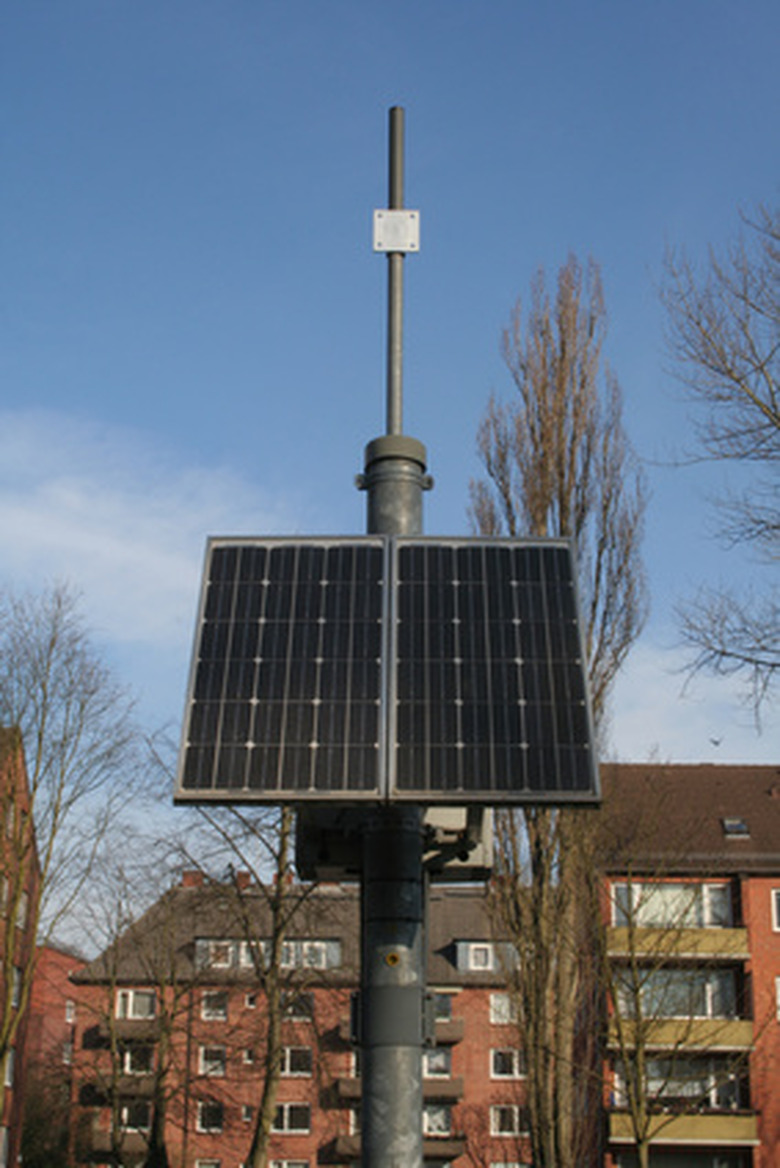How To Connect Solar Panels To My House's Electricity
Things Needed
-
Solar Panels
-
Power inverter (DC to AC)
-
Batteries
-
Circuit breaker
-
Electric shunt
-
Special utility
Solar power is increasingly gaining popularity as a reliable and clean energy source for the home. Initially, you may find solar cells expensive, so you may use them in conjunction with your existing, grid-power electricity to meet your home's energy requirements. Once you install solar panels at your home, you can reduce the electrician's charges by connecting them to your house's electricity yourself.
Step 1
Install solar panels on your roof with the help of a professional or a do-it-yourself solar kit. You should try to supply about 5000 watts of power per day to the house. This means you will have to install at least 20 250-watt panels for minimum use in the home. This number is sufficient to run a water pump, refrigerator and a few lights, which will help reduce your dependency on power-grid electricity. The greater the number of panels installed, the more energy efficient your house is. With enough solar panels, you may be able to sell the additional electricity.
Step 2
Install batteries for the solar panels based on your decision whether to replace your grid electricity entirely or if you want to install solar power that still uses grid electricity. You do not need batteries if you are using solar panels as backup energy only. However, if you are switching entirely to the solar power, you will have to purchase and install batteries that store the solar power for use at night.
Step 3
Connect the solar panels either directly to a power inverter and then connect it to the home grid, or connect the inverter to the battery and then to the home power grid. This power inverter converts the solar energy into energy that is consumable at home. Every panel on your roof uses direct current (DC) and your home power uses alternating current (AC). The power inverter converts DC into AC power.
Step 4
Connect the battery to the inverter. You will install the wiring from the battery to a circuit breaker and an electrical shunt. Now transport DC current into the inverter. The shunt and the circuit breaker will let the current break so as to prevent damage and overload. This way, the flow of electricity is regulated.
Step 5
Connect the inverter to the AC fuse box in your house. You will see that the inverter has a series of transformers and switches for converting DC to AC current. These provide power to the sockets and outlets in your house and as a result, your electronics and appliances get electricity.
Step 6
Connect the AC generator to the power inverter to provide additional electricity in case you run out of solar energy or battery power. Solar energy is unpredictable and you might run out of the stored solar energy if there are several weeks of cloudy days. A backup source is essential for meeting power needs.
Tip
Connect the solar panels to a special utility meter that runs backward and forward. If your panel array is too large for your energy requirements, you can sell the excess electricity to your utility company. For selling electricity, you need this special utility meter. The electric company will credit you for excess electricity produced by your solar panels.
